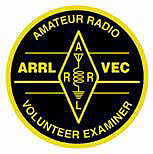The Wilderness Protocol, like many Amateur Radio practices, is not part of FCC regulations or law, merely a generally agreed upon practice. The purpose of the protocol is to provide a way for operators outside of repeater range and in need of assistance to make contact with other operators to request assistance.
Although it could, and should, be practiced under any conditions, it was originally designed as a tool for hikers, campers, and those who work in wilderness areas.
Operators, especially those in wilderness areas, would monitor calling frequencies on various bands (146.52 MHz, 52.525, 223.5, 446.0 and 1294.5 MHz) at the top of the hour. Ideally listeners would monitor from a few minutes before
the top of the hour until five minutes after for any calls for assistance. By limiting the window of communication it allows the person in need of assistance to extend the battery life of their radio.
The Wilderness Protocol recommends that those stations able to do so should monitor one or more of the calling frequencies every three hours starting at:
- 7 AM, local time, for 5 minutes…
- 10 AM
- 1 PM
- 4 PM
- 7 PM
- 10 PM
Keep in mind, if near a time-zone boundary, it may be necessary to monitor at the top of the adjacent hour as well. Additionally, those stations that have sufficient power resources should monitor for 5 minutes starting at the top of every hour, or even continuously.
Consider placing 146.52 MHz , 52.525, 223.5, 446.0 and 1294.5 MHz in your scanner, if you use a scanner or you operate your radio in scan mode.
Priority transmissions by those in need of assistance should begin with the LiTZ (LONG TONE ZERO) signal. The LiTZ signal is the tone generated by sending the "0" DTMF tone on a radio. This is generated on most radios by merely pressing and holding the zero button on the keypad for three to five seconds.
CQ-like calls (to see who is out there) should not take place until four minutes after the hour.




